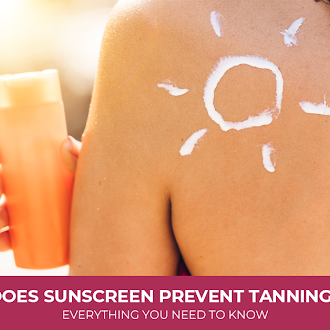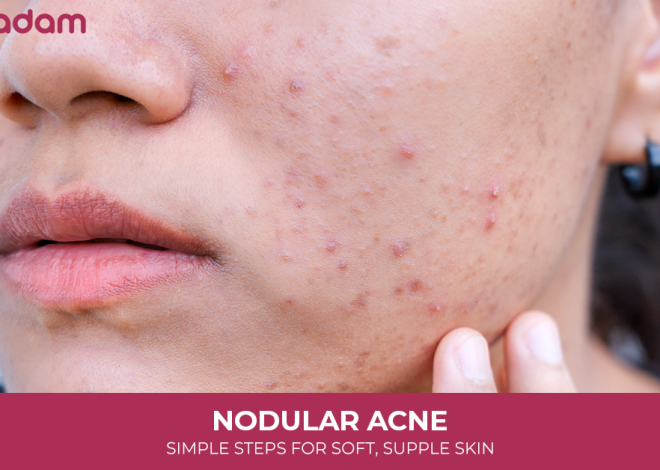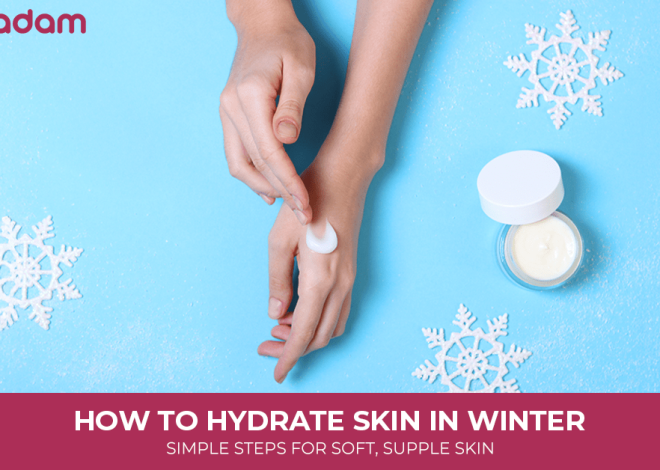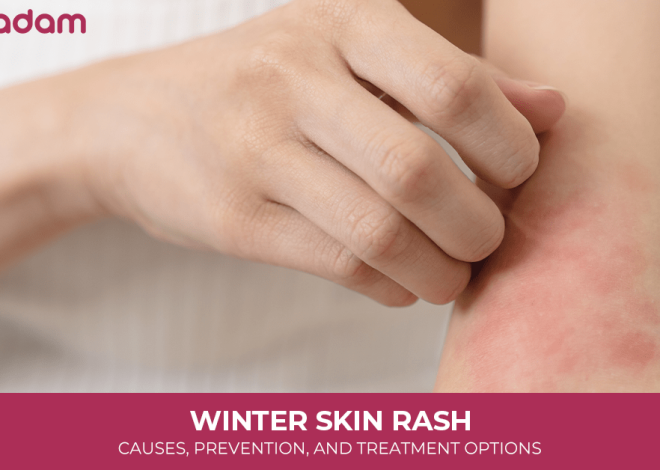
Does Sunscreen Prevent Tanning? Everything You Need to Know
The sun feels wonderful on our skin, but along with that warmth comes a common concern: does sunscreen prevent tanning? Many people wear sunscreen daily to shield against sunburn and premature aging, but they often wonder whether it truly stops tanning altogether—or just reduces it.
The reality is nuanced. Sunscreen is designed to protect your skin from harmful ultraviolet (UV) rays, and while it significantly lowers the chances of tanning, it may not completely eliminate it. Throughout this guide, we’ll explore how sunscreen works, whether it can remove existing tan, and what you can realistically expect when using it. By the end, you’ll have a clear, practical understanding of sunscreen and tanning, so you can make smarter choices for your skin health.
Table of Contents
How Sunscreen Works Against Tanning

When sunlight hits your skin, two main types of UV rays—UVA and UVB—are at play:
- UVA rays: Penetrate deeper into the skin, causing premature aging and contributing to tanning.
- UVB rays: Affect the outer layers, causing sunburn and triggering melanin production (the pigment responsible for tanning).
Sunscreen acts like a protective barrier. Depending on its type, it either:
- Absorbs UV rays (chemical sunscreens), converting them into heat and releasing them.
- Reflects/scatters UV rays (physical/mineral sunscreens like zinc oxide or titanium dioxide).
By filtering these rays, sunscreen reduces tanning and prevents sunburn, though no sunscreen can block 100% of UV radiation.
More Information For You: Body Wash vs Soap
Does Sunscreen Prevent Tanning Completely?
The direct answer: sunscreen prevents tanning to a large extent, but not entirely. Even the strongest sunscreen with high SPF (Sun Protection Factor) allows a small fraction of UV rays to reach your skin. Over time, this limited exposure can still stimulate melanin production, resulting in a mild tan.
So, if you’re wondering, “can sunscreen prevent tanning?” Yes, it reduces the process significantly, but total prevention isn’t possible. Think of sunscreen as a powerful filter, not an impenetrable shield.
Sunscreen and Tanning: The Science of Reduction
The term “tanning sunscreen” is often used in marketing, but it can be misleading. All sunscreens, by design, reduce tanning to varying degrees. The effectiveness depends on:
- SPF Level: Higher SPF blocks more UVB rays. SPF 30 blocks ~97%, SPF 50 blocks ~98%.
- Broad-Spectrum Label: Protects against both UVA and UVB, reducing sunburn and tanning.
- Application: Sunscreen must be applied generously and evenly—most people underapply.
- Reapplication: Every two hours, or immediately after sweating or swimming.
So while you can’t expect complete tan-proofing, a diligent sunscreen routine means noticeably less tanning compared to unprotected skin.
Everyday Habits That Boost Sunscreen’s Effectiveness
Beyond sunscreen alone, these daily habits can further reduce tanning:
- Seek Shade: Avoid direct sun between 10 a.m. and 4 p.m. when UV rays are strongest.
- Cover Up: Lightweight clothing with UPF (Ultraviolet Protection Factor) provides additional shielding.
- Hydrate & Nourish Skin: Healthy skin maintains its barrier better and heals tan faster.
- Reapply Religiously: Even the best sunscreen wears off with sweat, water, and time.
Don’t Miss: Oatmeal Honey Mask
Myths vs. Facts About Sunscreen and Tanning

- Myth: Sunscreen stops tanning 100%.
Fact: It reduces but doesn’t completely eliminate tanning. - Myth: Higher SPF means you can stay longer in the sun without reapplying.
Fact: Regardless of SPF, sunscreen must be reapplied every two hours. - Myth: Darker skin tones don’t need sunscreen.
Fact: Melanin provides some protection, but not enough to prevent UV damage or tanning. - Myth: Sunscreen removes tan.
Fact: It prevents future tanning but doesn’t reverse existing pigment.
Tips to Use Sunscreen Effectively to Minimize Tanning
Sunscreen is the most effective way to protect your skin and keep tanning to a minimum, but it only works if you use it correctly.
- Choose the Right Formula: Go for a broad-spectrum sunscreen with at least SPF 30 (SPF 50 if you’re outdoors longer). If you sweat or swim, pick a water-resistant one.
- Apply Enough and Don’t Miss Spots: Most people under-apply. Use a teaspoon for face and neck and a shot-glass amount for the body. Cover forgotten areas like ears, back of neck, and feet. Apply 15–30 minutes before sun exposure.
- Reapply Regularly: One application isn’t enough. Reapply every 2 hours, and right after swimming or sweating, to stay protected.
- Support with Habits: Wear hats, sunglasses, and light full-sleeve clothes, and try to avoid direct sun between 10 a.m. and 4 p.m.. Daily use matters, even on cloudy days.
Related Blog: Sunscreen Do we really need it
Additional Tips to Protect Your Skin from Sun Damage

Besides sunscreen, a few simple habits can go a long way in keeping your skin healthy and safe from the sun’s harsh effects:
1. Wear Protective Clothing
Lightweight, full-sleeve shirts, long pants, and wide-brimmed hats create a physical barrier against UV rays. Some fabrics even come with built-in UPF (Ultraviolet Protection Factor) for extra shielding.
2. Use Sunglasses with UV Protection
The skin around your eyes is delicate, and UV exposure can lead to wrinkles and even eye damage. Always pick sunglasses labeled UV400 or 100% UV protection.
3. Stay in the Shade
Whenever possible, especially between 10 a.m. and 4 p.m., seek shade under trees, umbrellas, or awnings to reduce direct exposure.
4. Be Consistent Year-Round
UV rays don’t disappear in winter or on cloudy days. Apply sunscreen daily, even if you’re indoors near windows, since UVA rays can pass through glass.
5. Add Antioxidants to Your Routine
Skincare products with Vitamin C, Vitamin E, or Green Tea extracts help combat free radicals and boost your skin’s defense against sun damage.
6. Stay Hydrated
Drinking enough water helps keep your skin supple and supports recovery from sun stress.
Conclusion
So, does sunscreen prevent tanning? The answer is yes—it significantly reduces tanning but does not eliminate it entirely. Sunscreen is a protective measure, not a tan remover. It doesn’t undo pigmentation, but it shields your skin from further UV damage, helping maintain your natural tone and promoting long-term skin health.
By using broad-spectrum sunscreen consistently, applying it correctly, and pairing it with other protective habits, you can enjoy the sun while minimizing tanning and safeguarding against more serious risks like premature aging and skin cancer.
FAQs
1. Does sunscreen prevent tanning completely?
No, sunscreen reduces tanning significantly but does not stop it completely. Some UV rays still reach your skin, which may trigger mild pigmentation over time.
2. Does sunscreen remove tan once it forms?
Sunscreen cannot remove an existing tan. It only prevents further tanning while your skin naturally renews and fades pigmentation on its own.
3. Can sunscreen remove tan gradually if I use it every day?
No, sunscreen doesn’t actively remove tan. Daily use ensures your tan doesn’t deepen, giving your skin time to heal and regenerate without additional darkening.
4. What type of sunscreen best prevents tanning?
A broad-spectrum sunscreen with SPF 50+ offers the best protection against both UVA and UVB rays, making it most effective at reducing tanning.
5. Does tanning sunscreen actually work differently?
“Tanning sunscreen” is often a marketing term. All sunscreens reduce tanning by filtering UV rays; the difference lies in SPF level and formulation.
6. Does applying sunscreen remove tan faster?
No, applying sunscreen doesn’t speed up tan removal. It only stops further UV damage while your skin naturally sheds tanned cells over time.
7. Can sunscreen reduce tanning on darker skin tones?
Yes, sunscreen reduces tanning for all skin tones. While darker skin has more melanin, sunscreen ensures additional UV-induced pigmentation is minimized.
8. Does sunscreen protect from tanning indoors?
Yes, especially if you sit near windows where UVA rays can penetrate. Broad-spectrum sunscreen helps protect even indoors during daylight hours.
9. How often should I reapply sunscreen to reduce tanning?
Reapply every two hours, and immediately after swimming or sweating. Consistent reapplication is key to maintaining strong protection from tanning.
10. Does sunscreen reduce tanning in extreme sun conditions like beaches?
Yes, but only if applied generously and reapplied often. Pairing sunscreen with hats, sunglasses, and shade makes protection much more effective in strong sunlight.
11. Does Sunscreen Remove Tan?
Sunscreen doesn’t remove tan, it prevents further darkening. Once skin is tanned, melanin won’t fade just by applying sunscreen. To reduce tan, remedies like exfoliation, hydration, vitamin C serums, or dermatological treatments are needed. Sunscreen’s role is only preventive.
12. Can Sunscreen Remove Tan Over Time?
Sunscreen doesn’t remove a tan. It prevents further darkening and lets skin heal naturally. As your skin renews over weeks, the tan may fade, but that’s your body’s process, not the sunscreen reversing pigmentation.
13. Can Applying Sunscreen Remove Tan?
Another common misconception: does applying sunscreen remove tan? The answer remains no. Applying sunscreen won’t reverse existing pigmentation—it only reduces further UV exposure. If your skin is already tanned, sunscreen simply halts progression and helps maintain your current tone.
For tan removal, you’ll need complementary strategies like exfoliating scrubs, hydrating masks, or dermatologist-recommended treatments.
14. Does Sunscreen Protect from Tanning?
Sunscreen protects by blocking UV rays, but only if used consistently. Skipping applications leaves skin vulnerable. To minimize tanning, choose:
- Broad-spectrum SPF 50+
- Water-resistant formulas
- Regular reapplication
Pair sunscreen with hats, sunglasses, and shade for the best protection.



